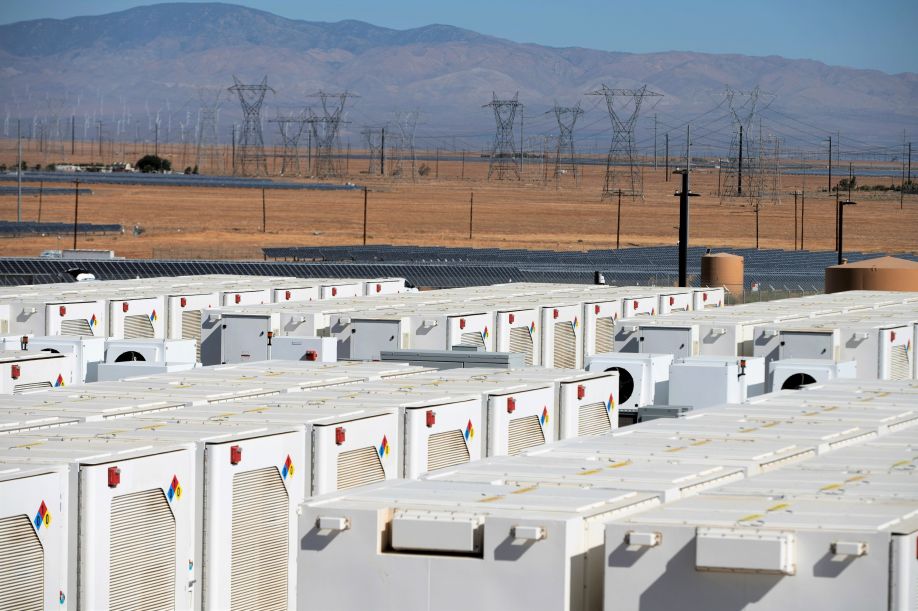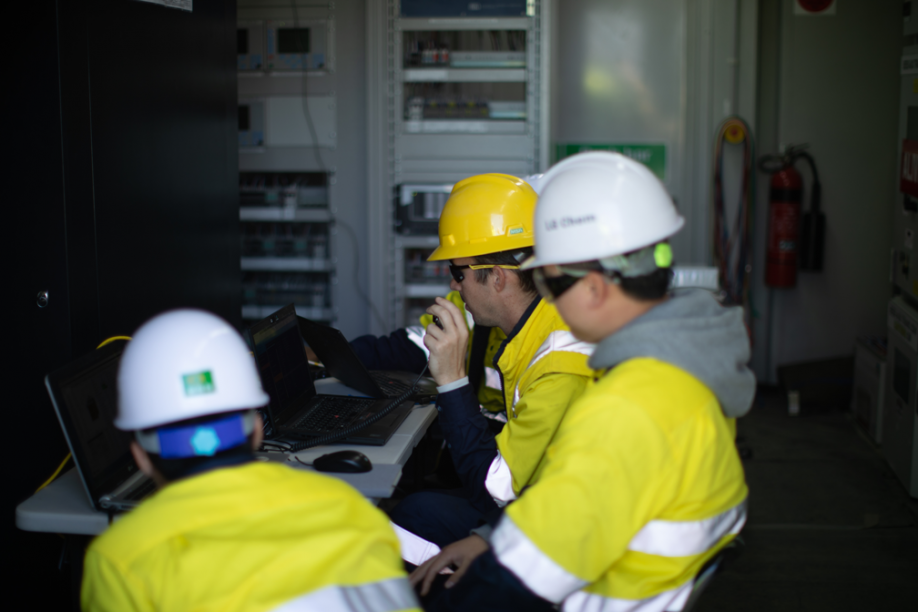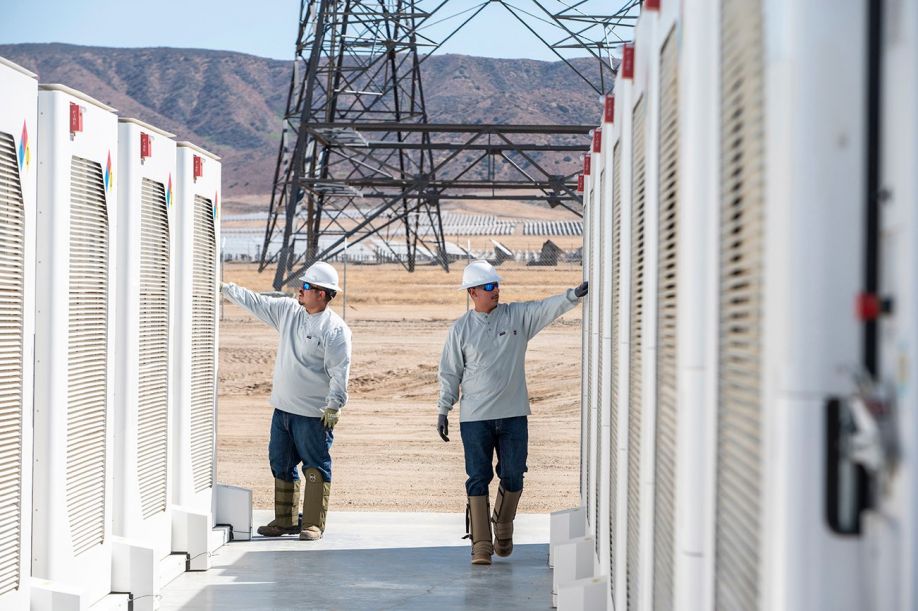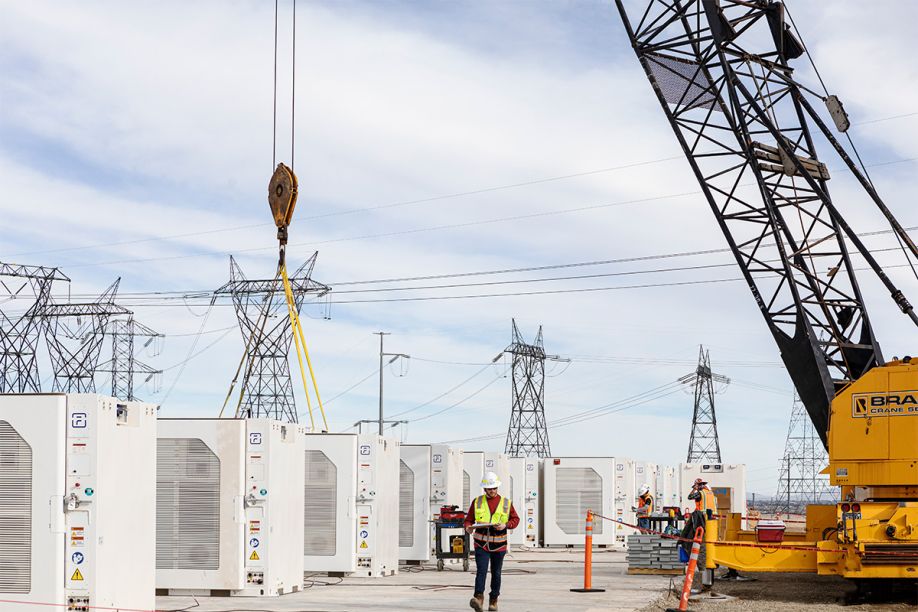In our latest blog, our experts share some valuable insights on why avoiding self-integration of battery-based energy storage systems is the best approach for long-term success.
Three Reasons to Avoid Self-Integration of Battery-based Energy Storage Systems
Lara Panjkov, Senior Growth & Market Development Manager, Apac at Fluence and Sanskriti Dubey, Sr. Manager, Growth & Communications | FLUENCE INDIA
For the most gifted technologists among us, it’s not impossible to build a smart phone, a computer, or even a car. But unless you’ve mastered the complex, interdependent technologies that go into advanced products and understand how to build them at scale, how would you expect them to perform over the long haul? Who would help you troubleshoot issues when they arise? How do you confirm they’re safe to use and comply with the latest standards?
In our latest blog, our experts share some valuable insights on why avoiding self-integration of battery-based energy storage systems is the best approach for long-term success.
Sounds challenging, right? Now take one of the most complex and rapidly evolving technologies in the power industry and combine it with one of the most demanding supply chains in the world. That’s the current environment for battery energy storage – a critical component of the clean energy transition and a technology filled with design, manufacturing, and market complexity. Delivering safe, effective, and scalable battery storage solutions that help transform our grid requires an endless pursuit of mastering this complexity.
For many complicated technologies involving hardware, controls, software, and safety, do-it-yourself (DIY), better known as self-integration, is fraught with hidden challenges. That’s why for consumer electronics, vehicles, and energy storage alike, experienced and continuously improving technology solution providers are so critical to long-term success, safety, and market adoption.
If you’ve been around the renewables industry long enough, you might recall the early days of the solar industry. Self-integration became common and quite successful for many solar developers as they grew familiar with the technology and how to deploy it. It was feasible and sometimes more cost-effective to choose your favourite “bits and pieces” of the system such as solar modules, inverters, and power plant controllers and to integrate the system yourself. Further, suppliers of these components could ensure PV systems were relatively plug-and-play. Drawing on this experience, many developers and Independent Power Producers (IPPs) are now trying to apply the same approach to energy storage systems.

However, reality can hit hard. Energy storage projects are orders of magnitude more complex than solar farms, partly because they are a fusion of both chemical and electro-mechanical systems. As a preview to this complexity, battery cells must be controlled and their state of health continuously managed and communicated to other controllers throughout the system. Additionally, voltage, active power, and reactive power must be managed at the Point of Connection. Further, energy storage is fast-responding and bi-directional, acting as both a generator and a load. This makes it a crucial tool for grid operators to better manage voltage and frequency irregularities caused by variable renewables and thermal asset retirements, but also adds to system complexity. Finally, unlike solar, energy storage is adaptable and offers an ever-evolving stack of capabilities to keep up with rapidly changing grid conditions.
Therefore, each part of an energy storage system requires highly skilled design and operational considerations. An energy storage project should be viewed as a system-of-systems – that is, something made up of many intricate subsystems across hardware, software, delivery, commissioning, servicing, and asset management. These systems must all coalesce perfectly so the asset can be delivered on time, connect to the grid, and perform the critical grid services it’s tasked with performing. Success demands a whole-of-system approach.
The best energy storage project developers aim to reduce complexity so they can remain laser-focused on the outcomes they need from their asset, usually one or more of optimising energy market revenue, helping manage a retailer portfolio, or providing services to the network or utility.
Many assets that start the development process aren’t able to reach substantial completion with an operating project. Multi-dimensional challenges will arise, which affect:
- Business case and financing: Developers must constantly evaluate how energy markets, offtaker appetite, debt financing, government policy, and macro trends affect project economics.
- Project development: Developers need to ensure they have appropriate permits and environmental approvals, as well as address social license in the local community.
- Network connection location: Developers must evaluate the impact on the network and ability for the project to connect. In networks around Asia, such as in Taiwan and the Philippines, integrating with system communications and transmission connection points has been difficult.
- Timing: Project development entails dozens of intricate work streams, some of which can be pursued in parallel, while others are interdependent and challenges risk holding up the project.
Successful, valuable assets require a highly strategic focus on development, and so it pays to reduce complexity and risk on the technology side. Experienced technology providers can make sure developers are getting the most suitable energy storage system to avoid significant (yet common) headaches and traps.
Based on our experience delivering more than 6.2 GW* of energy storage systems globally in the Americas, APAC (Australia, India, Taiwan, and Philippines), and EMEA regions, we’ve identified three key reasons why you should avoid a DIY approach and look to trusted energy storage technology providers:
- Navigating the technical complexity of energy storage requires deep experience and constant improvement.
- Strong technology providers help decrease supply chain and safety risks, among others.
- Reducing cost is important, but increasing long-term value of energy storage is essential.
Coming up, we take a closer look at each of these three key reasons for avoiding self-integration of energy storage systems. You can also download our whitepaper, “Understanding the Hidden Costs of Self-Integrating Your Energy Storage Solution” to learn more about the risks and hidden costs of self-integration.

Reason 1: Navigating the Technical Complexity of Energy Storage Requires Deep Experience and Constant Improvement
Like a vehicle, energy storage systems involve the integration of many components - including batteries, temperature and environmental sensors, fire detection equipment, controllers, heating and cooling systems, and more - all packed inside an enclosure. Although it's just one component of the energy storage system, the enclosure must be strong but not too heavy, small to reduce cooling load while big enough to be serviced easily, modular and accommodating of changes in battery modules, and enable rapid charging while minimising fire risk. Hundreds of enclosures connect to dozens of power conversion units and transformers all operating as a single bi-directional asset. The entire system must be fitted with data acquisition, controls, telecommunication, and software capabilities to ensure interoperability and coordinated power response across a large, highly distributed architecture.
The major benefit of working with an experienced technology provider is that they have already done the hard work to ensure systems are optimally designed for each market and use case. This process entails stringent qualification and testing of each piece of the system to make sure it integrates seamlessly. Large-scale manufacturing and installation experience is then used as a feedback loop to constantly improve system design. Understanding every part of the complex system and how it works together enables efficient root cause analysis when a system-level problem arises, where it may be otherwise difficult for the developer to determine responsibility and fix the problem quickly.
Let’s take a closer look at the energy storage outlook for a few of the global markets that Fluence serves and the complexities of delivering storage within those markets:
India's Energy Storage Build-out Requires Expertise
India is a high potential market for energy storage with a goal of producing 500 GW of power from non-fossil fuel sources by 2030. According to BloombergNEF, India may emerge as the third largest installer of energy storage by 2040.
The draft National Electricity Plan by the Central Electricity Authority (CEA) says India would need 51 GW of energy storage by 2030 to enable the country’s clean energy transition. When a country is gearing up for such a large transition, technology-specific experience is crucial. The industry is familiar with solar deployment, which can be relatively plug and play. Therefore, self-integration of solar may be feasible and even reduce costs. Yet for energy storage projects, developers may not foresee the complexity and major risks that could arise.
Procuring through global technology providers ensures the right approach for successful project execution. Using an integrated system that’s been validated in global markets means that developers can avoid common, time-consuming issues related to self-integrating individual components. They can also rely on the technology provider’s services to evaluate and resolve any bespoke issues. In a system of complex hardware, software, and controls, it can be difficult to identify the root cause of issues without understanding the system design and how these technologies interoperate. This knowledge helps track key product changes such as inverter updates, making sure issues that impact system operation are detected and resolved promptly, to minimize downtime and reduce operating costs.
Australia’s Grid Connection Challenge
Australia is an established but rapidly growing energy storage market with over 0.8 GW/1.1 GWh large-scale operating assets. BloombergNEF estimates between 8.5-13.8 GW to be built in the country by 2030. However, the Generator Performance Standards (GPS) process in the main grid, the National Electricity Market (NEM), has some of the world’s most challenging and extensive modelling requirements. In the NEM, experienced technology providers can play a valuable role to help developers efficiently connect projects to the grid. The Australian Energy Market Operator (AEMO) must be completely satisfied that the system’s Power Plant Controller (PPC) will maintain network stability at the point of connection. Therefore, PPC models must be extremely accurate and frequently updated to meet new AEMO requirements. Grid connection modelling issues are notorious for causing lengthy delays and can even risk stalling projects completely.
To better manage this process, experienced technology providers make their own PPC that is compatible with multiple qualified inverters, rather than integrating from a third party. Skilled in-house grid engineers can support developers or their consultants directly, resolving most issues from previous experience on projects and the qualification testing used to design the system. They can interface quickly with stakeholders when new challenges arise and make this difficult process less of a headache.

Reason 2: Strong Technology Providers Help Decrease Supply Chain and Safety Risks, Among Others
As mentioned previously, energy storage projects are orders of magnitude more complex than solar. With a self-integrated approach, how would you navigate competitive supply chain environments? Even if all components arrived on time, how would you ensure safety is embedded into every layer of the final system and fire safety risks are minimised? What impact would self-integration have on your project’s bankability and insurability? These essential questions require careful consideration as you choose which path to go down. We explore them further in the following sections.
Managing Supply Chain Challenges
How do you make sure you get the right equipment, in the right quantities, at the right time? In 2022, many industries witnessed one of the most challenging and volatile periods of supply chain disruption due to COVID-19 lockdowns and supply shortages. In 2023, as the competition for batteries between stationary storage and electric vehicles increases, developers are forced to compete with technology providers and auto manufacturers for capacity. Those with buying power – such as technology providers who have the capability to meet large delivery volumes - will have the easiest time securing this capacity. Experienced technology providers have their own dedicated supply chain specialists who work together with product and commercial teams and cultivate long-term, collaborative partnerships across a global base of suppliers. They are prepared for all sorts of challenges that could arise and help make sure equipment is prioritised and delivered in a timely manner.
Inexperience with complex details in the terms, especially relating to warranty and use-case, can lead to unexpected surprises. Seasoned technology providers have worked through many challenges with suppliers and have demonstrated that they can chart a clear path to resolution, all while maintaining a single point of contact for the customer.

Leading on Fire Safety
Would you really feel safe driving a DIY car or using a homemade electrical appliance? Probably not. Heavy machinery and electrical equipment must meet high standards of quality control, testing, and manufacturing to be safe to operate. The same focus on safety must be applied to energy storage systems. By taking a whole-of-system approach, strong energy storage providers embed safety into every layer of product design, implementation, and operation, incorporating the latest safety-related learnings and experience for continuous improvement. The best ones also push industry best practices forward by going above and beyond minimum safety standards. They proactively work with asset operators and local first responders to be well prepared to manage a highly unlikely worst-case scenario.
| Regarding fire safety, Fluence has gone beyond UL 9540A testing requirements, working with DNV to execute a successful large-scale burn test designed to evaluate an extreme battery failure event by triggering a significant portion of the battery into thermal runaway. The testing showed that even under an extreme event, propagation is limited to the initiating Cube. |
Reason 3: Reducing Cost Is Important, but Increasing Long-Term Value of Energy Storage Is Essential
Minimising cost is, of course, important but are you thinking deeply enough about ongoing value over the long haul? Delivering energy storage projects is not just a question of upfront CAPEX. Rather it’s about optimising the system’s whole-of-life value, which starts from the initial design phase. The system should not be under- or over-designed, which comes from integration experience as well as a deep understanding of the market value that the system is intended to provide, but also, how that might change. In addition, quality Long-Term Services Agreements ensure the asset operates at its best for up to 20 years.
Adapting to Provide New Services
The Australian national government is aiming to reach at least 82% renewable energy generation annually by 2030 (from 29% in 2021). Due to a rapid uptake of renewables, including rooftop PV, as well as coal plant exits, Australia is already witnessing a major shift in how the grid operates. Energy storage projects are already adjusting to that change, such as:
- From 2020 to 2021, many plants, including large-scale energy storage, were required to undergo major software upgrades to be able to provide Primary Frequency Regulation to help correct minor deviations in local frequency (a major software controls and servicing upgrade).
- In October 2022, the market transitioned from 30-minute settlement to 5-minute settlement (a major upgrade managed by Fluence Mosaic™, our AI-powered bidding software).
- In October 2023, two new frequency control markets will commence: Very Fast Frequency Control Ancillary Services (FCAS) Raise and Lower (in response, both a controls and bidding software must be upgraded).
Countless more market changes are on the horizon that will affect plant controls, software, and even hardware. Adapting to new market conditions requires local market experts maintaining a proactive feedback loop with global product, commercial, and software teams.
India plans to have 500 GW of non-fossil-based power capacity by 2030. By that time, cleaner fuels could make up 50% of the power mix and the grid would need different services to keep it reliable and secure. We have already witnessed this shift in other markets in the Asia Pacific region, such as the Philippines and Taiwan, which have evolved from secondary response services to primary response services. Experienced technology providers like Fluence could make this adaption journey as smooth as possible.
The Certainty of Long-Term Service Agreements
With a self-integration approach, if something goes wrong, who would you call to fix issues? The supplier of the inverter, the PPC, the battery, or all of them? How quickly could you expect issues to be resolved? Energy storage has become a mainstream infrastructure investment, partly because investors don’t have to take chances on poor performance issues. A skilled technology provider, such as Fluence with over 15 years of team experience, can provide a quality Long-Term Services Agreement, including an extended warranty and availability services for up to 20 years. This leverages advanced knowledge of causes for failure, failure rates, and planning required to mitigate such failures. It also considers the number of cycles, temperature, HVAC design, and annual average state of charge. This makes sure the asset is serviced for longevity and adheres to or even outperforms performance guarantees for availability, capacity, and Round Trip Efficiency.
Spare parts strategies can also ensure the risk of downtime, and therefore revenue loss, is kept to an absolute minimum. This can be coupled with Asset Performance Management (APM) software, such as Fluence Nispera™, which optimises renewable and energy storage asset performance with real-time monitoring, predictive maintenance automated reporting, and Al-powered analytics. It integrates asset data with intelligent machine learning models and visualisation tools to help energy storage, wind, and solar plant owners uncover hidden performance issues, minimise downtime, and maximise energy production.
Key Takeaways
Across the Asia Pacific region, as well as in many other markets, it’s not wise to look to solar to develop energy storage. A self-integration approach, or even using inexperienced technology providers, is unlikely to be worth the unnecessary risk, delays, and harm to long-term project bankability. Partnering with an experienced technology provider with a whole-of-system approach reduces complexity, offers peace of mind, and gives developers the best shot at building valuable assets.
The content & opinions in this article are the author’s and do not necessarily represent the views of AltEnergyMag
Comments (0)
This post does not have any comments. Be the first to leave a comment below.
Featured Product

